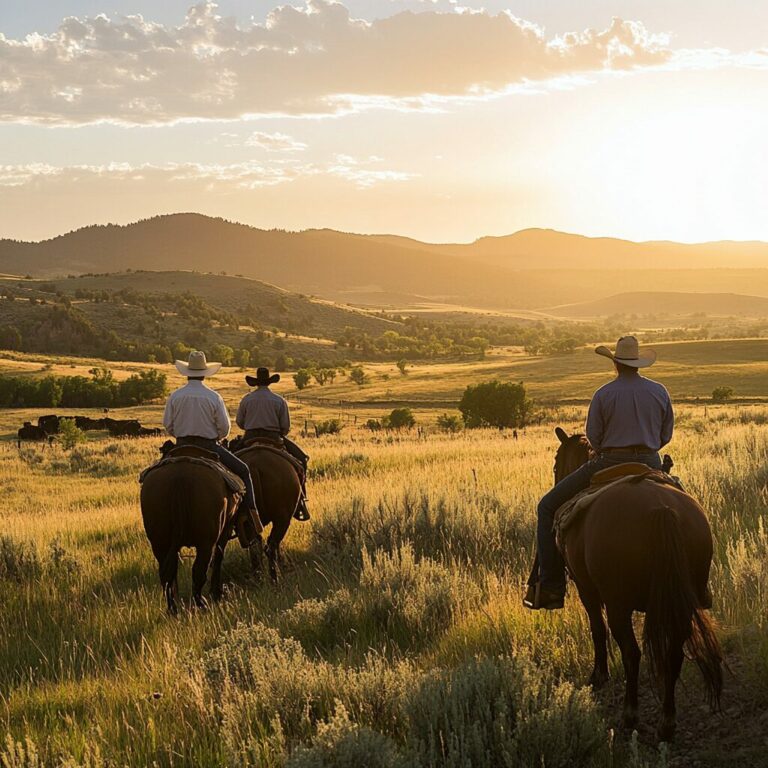
Mastering the Art of Selling Your Ranch: Comprehensive Guide and Proven Tips
Introduction
The ranching industry holds a unique allure, blending the rugged beauty of nature with the practicality of agriculture and land management. For ranch owners looking to sell their property, navigating the real estate market can be both challenging and rewarding. Whether you’re a seasoned rancher or a first-time seller, understanding the intricacies of selling a ranch is crucial to achieving a successful transaction.
In this comprehensive guide, Mastering the Art of Selling Your Ranch: Comprehensive Guide and Proven Tips, we’ll delve into the essential steps and strategies for selling your ranch effectively. From preparing your property for sale to negotiating the best deal, each stage of the process plays a vital role in ensuring a smooth and profitable transaction. Whether you’re selling a working cattle ranch, a recreational property, or a luxury estate, these tips are designed to help you maximize your selling potential and achieve your desired outcome.
l. Preparing Your Ranch for Sale
Before listing your ranch on the market, it’s essential to take the time to prepare it thoroughly. This involves assessing its market value, making necessary repairs and improvements, and organizing all relevant financial and legal documents.
1. Assessing Market Value
Determining the market value of your ranch is a critical first step in the selling process. While it’s tempting to rely on your own estimates or online valuation tools, hiring a professional appraiser or real estate agent with expertise in valuing rural properties is highly recommended. An appraiser or real estate agent will conduct a thorough evaluation based on various factors, including the size of the property, its location, topography, improvements, water rights, income potential, and market trends.
Appraisers/ real estate agents use a combination of methods, such as the sales comparison approach, income approach, and cost approach, to arrive at an accurate valuation. The sales comparison approach involves comparing your ranch to similar properties that have recently sold in the area. The income approach considers the potential income the ranch can generate, such as from agricultural operations, leasing, or recreational activities. The cost approach evaluates the replacement cost of the property’s improvements and infrastructure.
| Tip: | Research recent sales of similar ranch properties in your area to get a better understanding of the market value range. |
2. Making Necessary Repairs and Improvements
Once you have a clear understanding of your ranch’s market value, it’s time to address any maintenance issues and make strategic improvements to enhance its overall appeal. Start by conducting a thorough inspection of the property, including buildings, infrastructure, fences, roads, irrigation systems, and landscaping. Identify areas that need repair or upgrading and prioritize tasks based on their impact on the property’s marketability and value.
Common repairs and improvements may include:
- Structural Repairs: Address any structural issues with buildings, barns, fences, or other structures on the property. This may involve repairing roofs, walls, foundations, or structural damage caused by pests or weather.
- Infrastructure Upgrades: Improve roads, driveways, and access points to the property to ensure easy navigation for potential buyers and visitors. Repair or upgrade irrigation systems, wells, septic systems, and utility connections as needed.
- Aesthetic Enhancements: Enhance the visual appeal of the ranch by painting buildings, repairing or replacing damaged siding, updating landscaping, and adding decorative elements such as fencing, gates, or signage.
- Functional Improvements: Upgrade amenities and facilities that add value to the property, such as barns, livestock handling facilities, removing junk, equipment organizing and storage, workshops, guest accommodations, recreational areas, and water features.
- Environmental Considerations: Address any environmental concerns or compliance issues related to water quality, soil conservation, wildlife habitat, grazing management, or land use regulations. Implement sustainable practices and showcase environmentally friendly features of the ranch.
- Safety and Accessibility: Ensure the property meets safety standards and accessibility requirements, especially if you plan to host tours, events, or recreational activities. Install appropriate signage, lighting, fencing, and emergency equipment as needed.
Tip: | Focus on enhancing curb appeal by maintaining landscaping, painting structures, and decluttering the property. First impressions matter. |
3. Organizing Financial and Legal Documents
Gathering all relevant paperwork and documents is crucial for a smooth selling process. This includes property deeds, titles, tax records, financial statements, and any legal contracts or agreements related to the ranch.
Tip: | Consider creating a comprehensive information packet for potential buyers, including property details, land use history, and any relevant permits or zoning information. |

ll. Marketing Your Ranch
Once your ranch is ready for sale, the next step is to market it effectively to reach potential buyers. This involves utilizing online platforms, engaging with local real estate agents, and hosting open houses or private tours.
1. Utilizing Online Platforms and Real Estate Listings
In today’s digital age, the majority of buyers start their property search online. Create a compelling listing with high-quality photos and videos showcasing the beauty and functionality of your ranch. Utilize real estate websites, social media platforms, and targeted advertising to reach a wide audience of potential buyers.
Tip: | Highlight the unique features of your ranch, such as scenic views, water rights, wildlife habitat, or income-generating opportunities like farming or hunting leases. |
2. Engaging with Local Real Estate Agents and Brokers
Collaborating with experienced agents such as James Bigley, who specialize in rural properties can significantly enhance your marketing efforts. They can provide valuable insights into pricing strategies, target demographics, and effective promotional techniques. Additionally, agents have access to a network of buyers actively seeking ranch properties.
Tip: | Interview multiple agents before choosing one, and prioritize those with a proven track record in selling ranches and a strong understanding of your local market. |
3. Hosting Open Houses and Private Tours
Offering opportunities for potential buyers to visit your ranch in person can make a significant impact. Showcase its best features, provide informative tours, and be prepared to answer questions about the property, its history, and its potential uses.
Tip: | Stage key areas of the ranch, such as the main house, barns, pastures, and recreational areas, to help buyers envision themselves living or working there. |

III. Negotiating and Closing the Sale
As offers start coming in, it’s essential to navigate the negotiation process effectively and ensure a successful closing. This involves setting a realistic asking price, evaluating offers, and collaborating with legal and financial professionals.
1. Setting a Realistic Asking Price
Pricing your ranch competitively is critical to attracting qualified buyers and maximizing its selling potential. Consider factors such as market trends, comparable sales, property condition, and potential for income generation when determining the asking price.
Tip: | Be open to negotiations but have a bottom line in mind. Avoid overpricing the property, as it may deter serious buyers and prolong the selling process. |
2. Evaluating Offers and Potential Buyers
Carefully review each offer received, taking into account the buyer’s financial qualifications, proposed terms, and intentions for the property. Consider factors such as financing contingencies, inspection timelines, and any additional requests or concessions.
Tip: | Work closely with your real estate agent and legal advisor to assess the strengths and weaknesses of each offer and negotiate terms that align with your priorities. |
3. Collaborating with Legal and Financial Professionals
Once you’ve accepted an offer, it’s essential to work with professionals who can guide you through the closing process. This includes drafting a clear and comprehensive sales agreement, handling escrow and title transfer, and ensuring all necessary paperwork is completed accurately and on time.
Tip: | Stay informed about tax implications, capital gains considerations, and any legal requirements or disclosures related to the sale of real estate in your area. |
IV. Post-Sale Considerations
After the sale is finalized, there are several post-sale considerations to keep in mind, including assisting the new owners with transitioning, managing tax implications, and reflecting on the selling process.
1. Assisting New Owners with Transitioning
Offer support and guidance to the new owners as they take over the property. Provide information about its operations, maintenance requirements, and any ongoing contracts or agreements. This can help ensure a smooth transition and positive relationship with the buyers.
Tip: | Consider providing a transition period or training sessions for the new owners, especially if they are new to ranching or unfamiliar with the property’s specific features and systems. |
2. Managing Tax Implications and Financial Matters
Consult with tax advisors or accountants to understand the tax implications of the sale, including capital gains taxes, depreciation recapture, and potential deductions or exemptions. Develop a plan for managing the proceeds from the sale and consider any long-term financial goals or investments.
Tip: | Explore options for tax-deferred exchanges or other strategies to minimize tax liability and maximize the financial benefits of selling your ranch. |
3. Reflecting on the Selling Process
Take time to reflect on the selling process, identifying successes, challenges, and lessons learned. Consider what went well and areas for improvement, especially if you plan to sell additional properties in the future. Use feedback from buyers, agents, and advisors to refine your approach and strategies.
Tip: | Keep detailed records of the selling process, including marketing efforts, negotiations, and closing procedures, for future reference and continuous improvement. |
Conclusion
Selling a ranch is not just a transaction; it’s a significant milestone that represents years of hard work, dedication, and passion for land stewardship. As you navigate the complex process of selling your ranch, remember that preparation, marketing savvy, and effective negotiation skills are your greatest assets.
By following the comprehensive guide and proven tips outlined in this article, you’re well-equipped to embark on the journey of selling your ranch with confidence and success. Here are some key takeaways to keep in mind:
- Strategic Preparation: Take the time to assess the market value of your ranch, make necessary repairs and improvements, and organize all essential documents. This groundwork sets the stage for a smooth and lucrative sale.
- Effective Marketing: Utilize online platforms, engage with experienced real estate agents, and showcase your ranch’s unique features through compelling visuals and informative tours. A targeted marketing strategy helps attract the right buyers and maximize exposure.
- Negotiation Expertise: Set a realistic asking price, evaluate offers carefully, and collaborate with legal and financial professionals to navigate the negotiation and closing process smoothly. Effective communication and flexibility are key to reaching a mutually beneficial agreement.
- Post-Sale Support: Assist the new owners with transitioning into the property, manage tax implications and financial matters diligently, and reflect on the selling process to identify strengths and areas for improvement. Building positive relationships and staying informed are essential for long-term success.
Selling your ranch is not just about transferring ownership; it’s about finding the right match for your property—a buyer who shares your vision and appreciation for its unique characteristics. Whether your ranch is a working farm, a recreational retreat, or a luxury estate, your dedication to showcasing its value and potential will resonate with potential buyers.
As you embark on this journey, remember to stay patient, stay informed, and rely on the expertise of professionals in the real estate industry. Your ranch is more than just land and buildings; it’s a legacy that deserves to be passed on with care and consideration.
Best of luck with your ranch selling endeavor, and may your next chapter be filled with new adventures and opportunities in the ever-evolving landscape of land ownership and stewardship.

Complete Guide to Buying a Ranch in Texas
Complete Guide to Buying a Ranch in Texas Introduction Texas is home to some of the largest and most diverse ranches in the United States.

Screwworm: What Ranchers Need to Know
Screwworm: What Ranchers Need to Know (Updated 9/22/2025) For live mapping of screwworm cases go here – MAPPING The New World screwworm has returned to the

Do Easements Devalue Property? What Every Landowner Should Know
Do Easements Devalue Property? What Every Landowner Should Know Easements are a common but often misunderstood part of landownership in Texas and across the country.

Choosing the Best Ranch Location
Choosing the Best Ranch Location A ranch location refers to the geographic area where a ranch is situated. It encompasses the land, natural surroundings, and

Warthogs in Texas Where Theyre Roaming Free and Why It Matters
Warthogs in Texas: Where Theyre Roaming Free and Why It Matters Warthogs in Texas: Where Theyre Roaming Free and Why It Matters Once limited to
Unlocking Opportunity: What Real Estate Agents Need to Know About the Carbon Market
Unlocking Opportunity: What Real Estate Agents Need to Know About the Carbon Market Keywords: carbon markets, real estate agents, soil carbon sequestration, carbon credits, ranch



